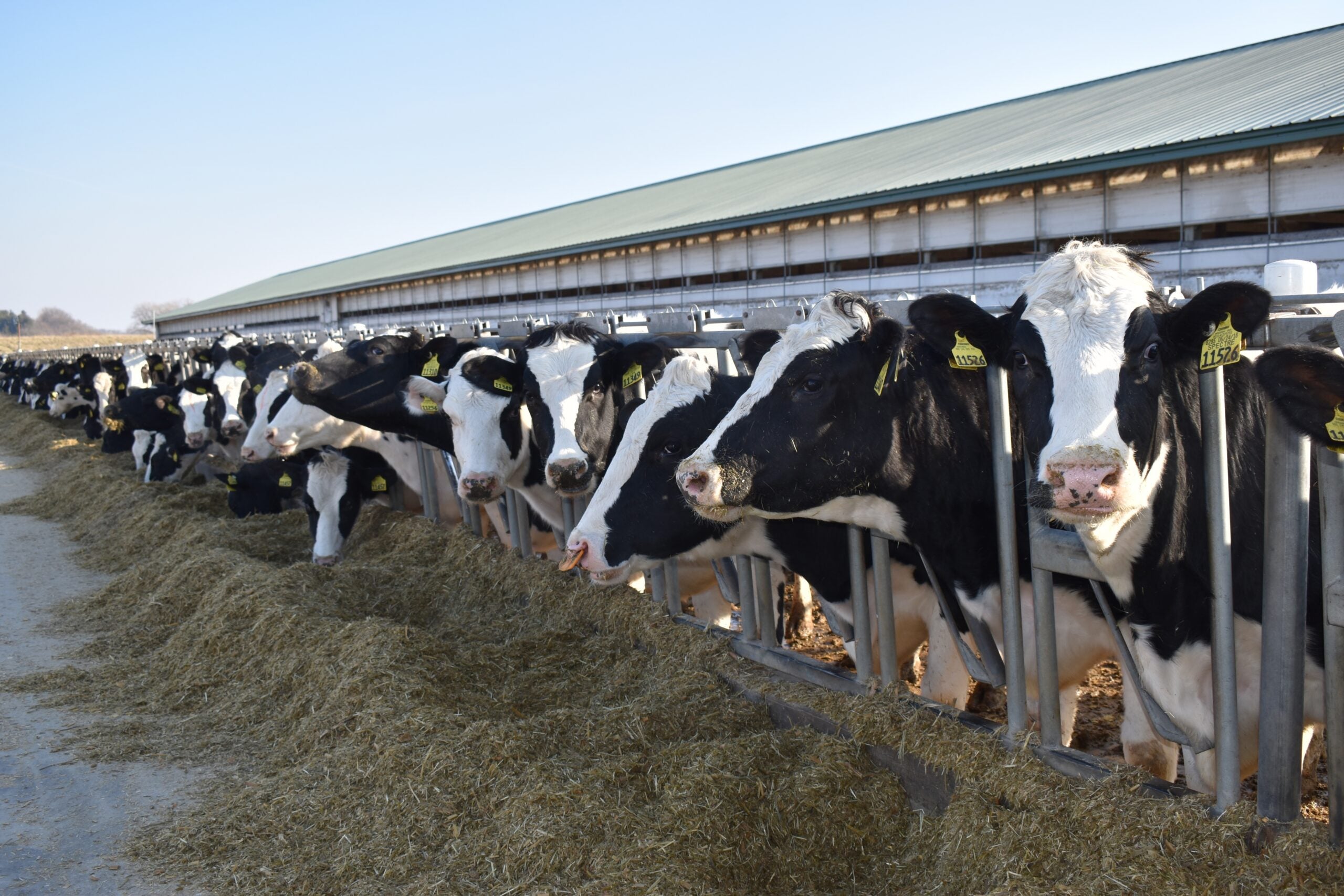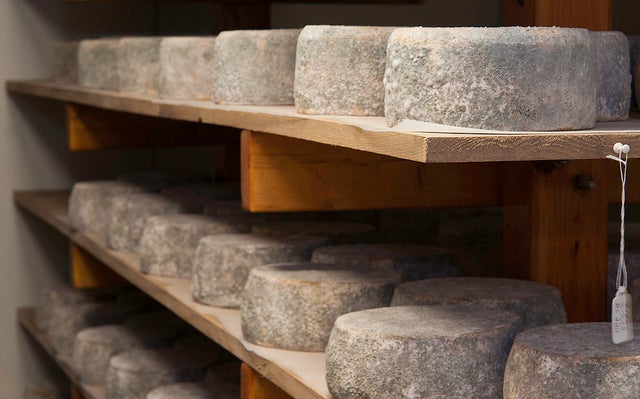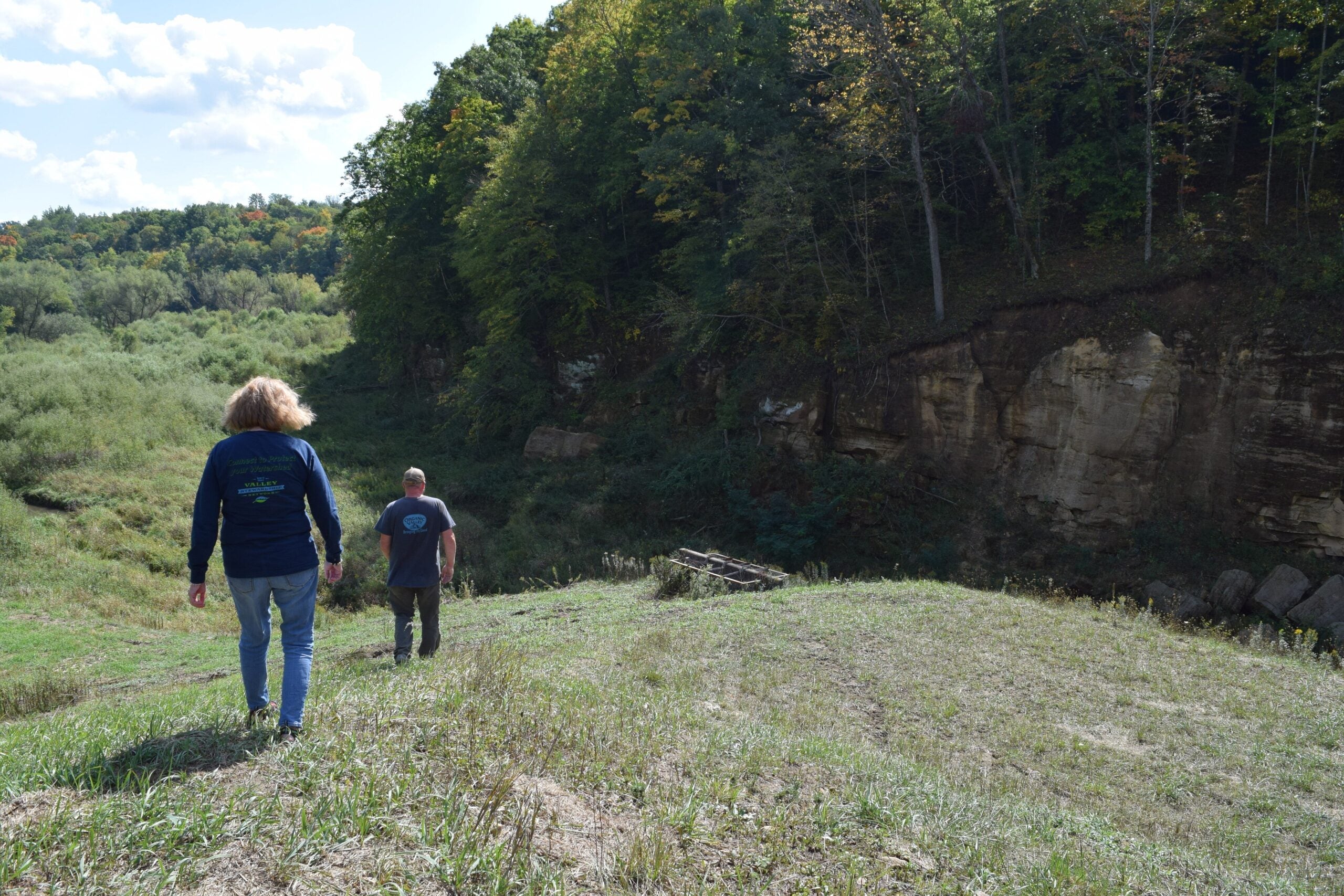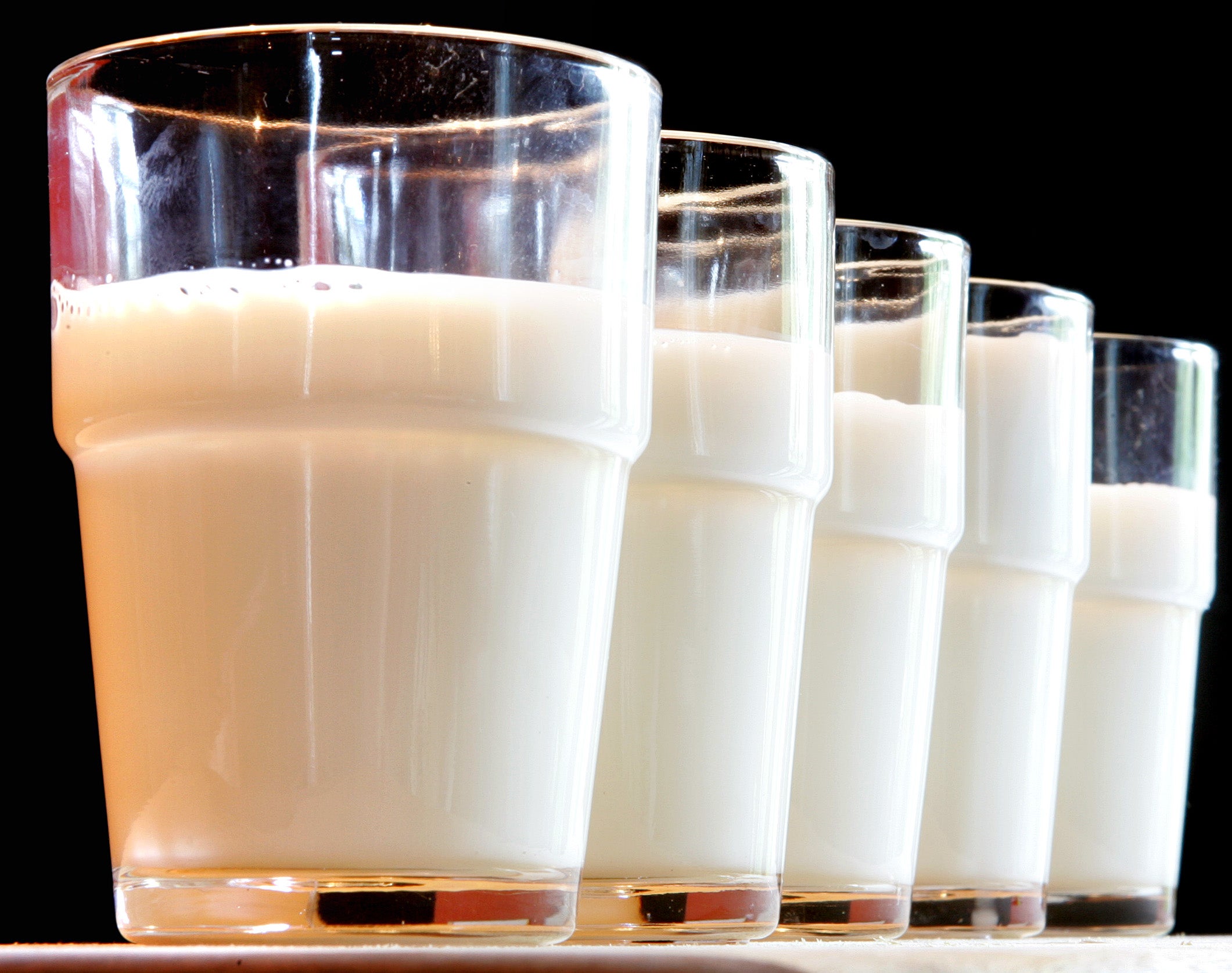Wisconsin’s dairy industry is integral to the state’s identity, but the industry is struggling — and the threat of climate change hasn’t helped. Flooded fields, washed out roads and rising temperatures are making an already challenging job more difficult to manage. In this series, WPR is exploring how the state can adapt to and mitigate the affect climate change is having on some of Wisconsin’s most iconic foods.
On a cold, sunny day in December, a row of dairy cows chews through a precise mix that contains corn, alfalfa and soybeans at Crave Brothers Farm outside of Waterloo.
Those crops, grown on 3,000 acres of farmland, feed Crave Brothers‘ 2,200 cows. In turn, the cows produce enough milk for the roughly 15,000 pounds of cheese coming out of the farm’s cheese factory each day.
News with a little more humanity
WPR’s “Wisconsin Today” newsletter keeps you connected to the state you love without feeling overwhelmed. No paywall. No agenda. No corporate filter.
“Our story is crops to cows, cheese to the consumer,” said George Crave, who runs the farm with his three brothers.
But there are costs to producing dairy products.
Dairy farms make a measurable contribution to greenhouse gas emissions. And globally, greenhouse gases from agriculture production create a vicious cycle — a hotter planet makes food production more difficult in many places.
Farmers like the Craves believe a farm that runs efficiently is ultimately better for the environment.
That’s one reason the Craves installed two anaerobic digesters — producing enough electricity for the farm, cheese factory and 300 homes in the community from the methane in cow manure, as well as fertilizer for the fields and bedding for the cows.
Recent years have been tough on dairy farmers — plummeting milk prices, oversupply and an overwhelming trend toward consolidation have led to a record number of bankruptcies across the state. Amid those struggles, climate change has emerged as yet another adversary. Wisconsin is a warmer and wetter place than it was a generation ago, and will continue to be so.
Experts say the agriculture industry needs to fundamentally change to mitigate and adapt to a changing climate. But dairy farmers, in an industry that is already stressed at the seams, have questions on what that means — and who’s going to help them do it.
Increasing Temperatures Tough On Dairy Cows
It takes a lot of milk to produce cheese.
While it depends on the style of cheese, Mark Johnson, assistant director of the Center for Dairy Research at the University of Wisconsin-Madison, said it averages to about 10 pounds of milk for 1 pound of cheese.
But as the state warms, farmers are concerned about seeing their dairy cows produce less and less milk.
Cows like it cold and are particularly sensitive to heat stress, so every August and September there’s a dip in milk production, Johnson said. This could be problematic for cheesemakers who rely on milk that’s high in fat and protein.
Sarah Lloyd, a dairy farmer and director of special projects at Wisconsin Farmers Union, echoed Johnson’s concern, and added that summer nights don’t seem to cool off like they used to.
“It definitely reduces production,” she said. “You can see it immediately that day.”
Ninety percent of the milk produced in Wisconsin goes to making cheese. And while changes in tastes and lifestyles have led to a steady free fall in the consumption of drinking milk for decades, Americans are eating more cheese than ever before.
Since 1950, Wisconsin has warmed by about 2 degrees Fahrenheit. By 2050, scientists expect the state to warm by an additional 2 to 8 degrees Fahrenheit; the likelihood of greater frequency in heat waves will also rise.

Graph courtesy of Dan Vimont, director of the Center for Climatic Research
A dairy cow’s optimal temperature range is between 25 and 65 degrees Fahrenheit — when temperatures reach 80 to 90 degrees Fahrenheit, milk production can decrease by about 10 percent. Above 90 degrees, production can dramatically decrease, often by more than 25 percent, according to UW-Extension.
On Crave Brothers Farm, the cows are kept in open air, free-range barns designed to keep them comfortable and productive.
“If the temperature is over 75 degrees, they get water sprayed on them periodically, and we have large fans that continually cool them … keeps them eating, keeps them productive,” Crave said.
Out in the field, where the Craves grow the crops to feed their cattle like many other dairy farmers in the state, the last few years of intense rainfall have been tough on crop production.
‘The Ground Is Just Always Saturated’
There used to be dry-offs between rains, Crave said.
“But now it’s like, OK, here’s 2 more inches and there’s 2 more inches and there’s 2 more inches,” he said. “And all of a sudden in July, you get 7 inches. In August, you have 7 inches of rain, which is totally unheard of.”
“I can think of 2018, where I dumped 10 inches of rain out of the rain gauge in a one-week period,” Crave continued.
Yet, Crave considers his farm among the lucky ones. They’ve still been able to farm and work most of their ground — although he admits not very efficiently.
In other parts of the state — particularly in the western region — and the wider Midwest, so much rain has been devastating, delaying or altogether preventing crop plantings across the region.
Between disruptions to freeze and thaw cycles, dealing with washed out bridges and roads and increasing feed prices, farmers are feeling the pressure. The added unpredictability can be discouraging, but Crave said he’s not an alarmist.
“When Mother Nature really keeps stopping you from advancing, it’s frustrating for everyone,” he said. “It makes more work, and no one pays us for that extra work either.”
Wisconsin Public Radio, © Copyright 2026, Board of Regents of the University of Wisconsin System and Wisconsin Educational Communications Board.



